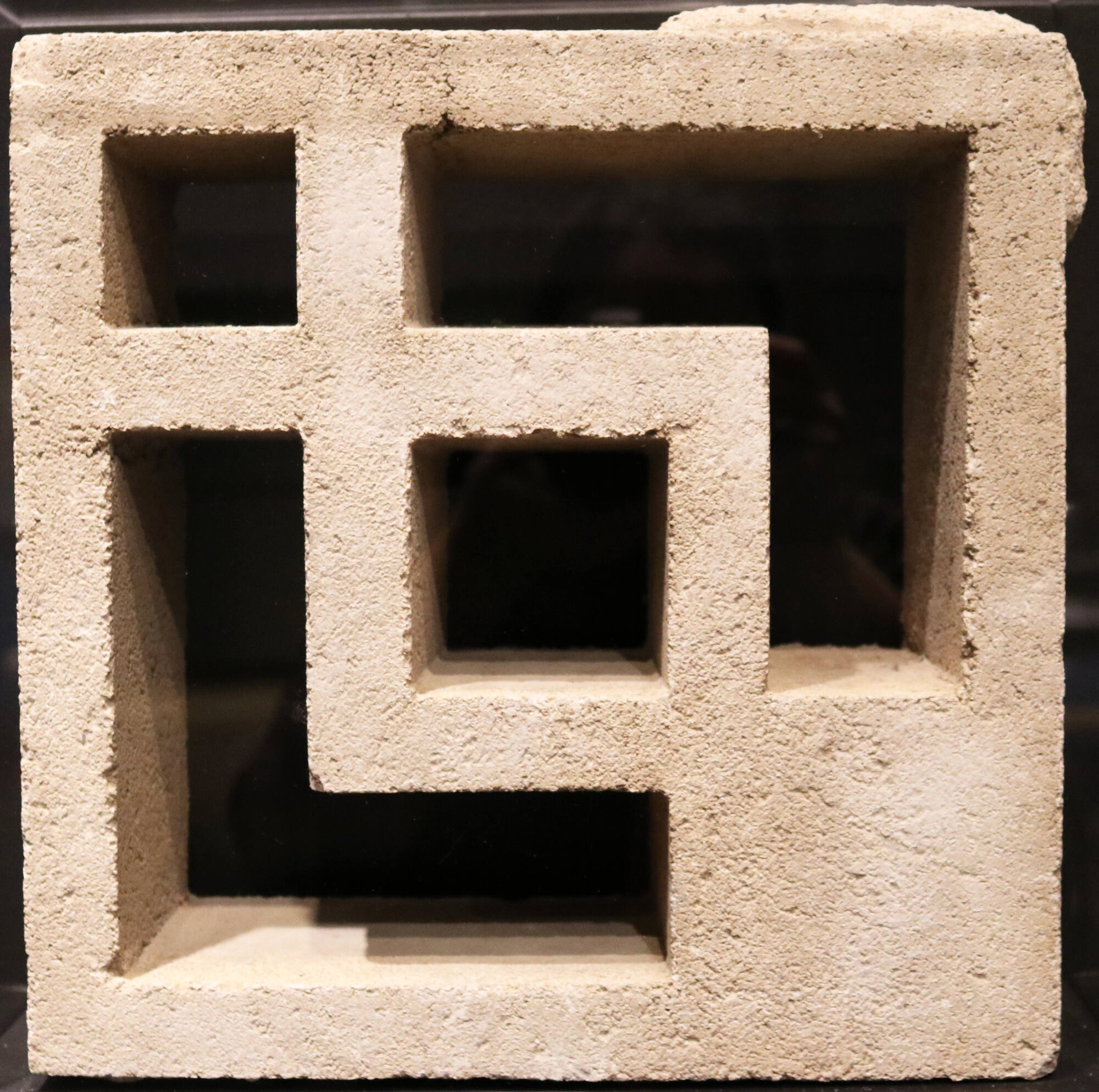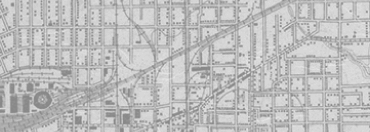


Back
Decorative breeze block brick from the Texas School Book Depository
This decorative masonry brick is known as a "breeze block." These types of bricks formed the iconic latticework screen that once covered the first floor windows of the Texas School Book Depository building in the 1960s. The breeze block is 12 inches square and 3 1/2 inches deep and is made of cast concrete compressed into a mold. The design was inspired by ancient Greek geometric patterns. The purpose of the breeze blocks was to allow ventilation through open ground floor windows while cutting down on noise pollution from nearby streets. Only a handful of these bricks from the Texas School Book Depository survive intact today, and this is a representative sample.This building element was recovered by Dallas County after their purchase of the former Texas School Book Depository building in 1977.
Decorative breeze block brick from the Texas School Book Depository
circa 1955
Concrete
12 x 12 x 3 1/2 in.
The Sixth Floor Museum at Dealey Plaza Collection
1987.001.0066.0001
A breeze block wall, comprised of patterned nonstructural concrete blocks, was a popular midcentury architectural element. Both decorative and functional, the blocks provided shade and circulation for buildings without air conditioning. John Sexton and Company grocery wholesalers added breeze blocks to the exterior window bays in the 1950s. They remained in place until Dallas County renovations between 1978 and 1981 returned the building’s exterior to its original 1901 appearance. - Stephen Fagin, Curator
This object was part of the Fragments special installation on the Museum's 7th floor, on view from November 3, 2021 through July 3, 2022.

Decorative breeze block brick from the Texas School Book Depository
This decorative masonry brick is known as a "breeze block." These types of bricks formed the iconic latticework screen that once covered the first floor windows of the Texas School Book Depository building in the 1960s. The breeze block is 12 inches square and 3 1/2 inches deep and is made of cast concrete compressed into a mold. The design was inspired by ancient Greek geometric patterns. The purpose of the breeze blocks was to allow ventilation through open ground floor windows while cutting down on noise pollution from nearby streets. Only a handful of these bricks from the Texas School Book Depository survive intact today, and this is a representative sample.This building element was recovered by Dallas County after their purchase of the former Texas School Book Depository building in 1977.
Decorative breeze block brick from the Texas School Book Depository
circa 1955
Texas School Book Depository
Dallas County Historical Foundation
Dallas County
Dallas
Concrete
12 x 12 x 3 1/2 in.
The Sixth Floor Museum at Dealey Plaza Collection
1987.001.0066.0001
A breeze block wall, comprised of patterned nonstructural concrete blocks, was a popular midcentury architectural element. Both decorative and functional, the blocks provided shade and circulation for buildings without air conditioning. John Sexton and Company grocery wholesalers added breeze blocks to the exterior window bays in the 1950s. They remained in place until Dallas County renovations between 1978 and 1981 returned the building’s exterior to its original 1901 appearance. - Stephen Fagin, Curator
This object was part of the Fragments special installation on the Museum's 7th floor, on view from November 3, 2021 through July 3, 2022.








